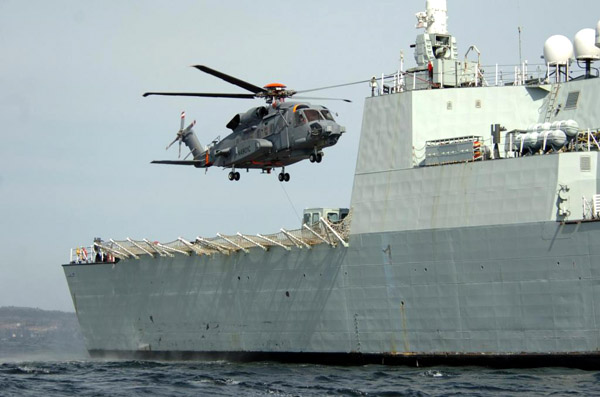 |
| First landing of Cyclone 801 on HMCS Montreal. (Photographer unknown) |
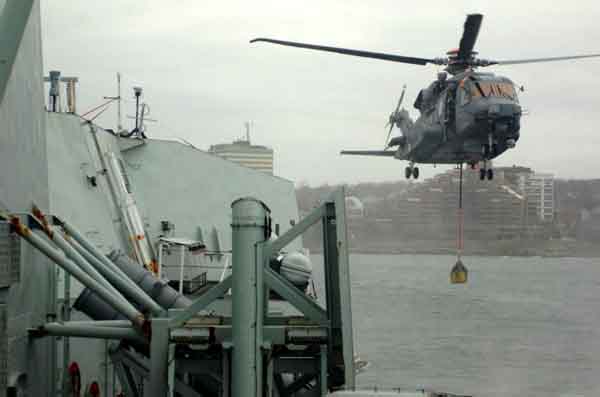 |
|
The acronym means VERTical REPlenishment. Ian Snow expands on this. "In plain language, it is about slinging loads (as opposed to liquid or solids replenishment done between two ships side-by-side using tensioned cable systems). The load is normally placed at the centre of a cargo net (wire or nylon webbing 'sewn' into a large square) which both lifts the load and keeps the load together as the act of lifting closes the net around it. The cargo net is normally attached to the helicopter with a "strop", which is frequently stiffened with rod or outer sheath. This keeps the load suspended a safe distance below the helicopter as the effects of wind and centrifugal forces cause the load to swing or rotate. Load movement is reduced by flying technique and maintaining an airspeed that reduces swing to a minimum. Movement is also reduced by packing the load in a conformal shape that maintains drag on both sides (for example, five drums instead of four). The other benefit of a rigid strop is that the helicopter can hover at greater height during hook-up making it safer for the ground crew and increasing the probability that the pilot can move sideways away from the ground crew and load should something untoward take place (e.g. engine failure). The strop is attached to an independent hook on the underside of the helicopter. Larger, especially logistics/cargo helicopters, have the hook permanently installed in the underbelly of the helicopter. Frequently there is a hatch in the floor of the helo that can be opened so that the crewman/loadmaster can "con" the pilot during the hook-up and drop, and monitor load stability while in forward flight. In smaller general purpose helos the hook is installed under the helo using a four-point harness that connect to attachment points on either side of the helo. The helicopter hook is operated electro-mechanically by the pilot. The Canadian Sea King uses a unique solution. The end of the strop has a fitting identical to the one installed on the end of the ship's hauldown cable. The strop is normally placed on the load for initial pick-up. While in a hover over the load the co-pilot lowers the helo's hauldown messenger cable, to which the groundcrew attach the strop fitting. Once raised through the helicopter's main probe the fitting is locked into the main probe in the same fashion that the ship's hauldown cable is, and the messenger cable separates automatically. The strop (and load) can be jettisoned immediately should the load become unstable in-flight. This can happen virtually instantaneously with low density loads should the pilot exceed as exceeded the maximum forward speed for the given load density. Flying technique is crucial to safe VERTREP operations. Most ships, and especially the smaller ones, do not have much in the way of open deck space and frequently what there is is further compromised by mast, rigging and antenna obstructions (waving about with ship movement) limiting how close the helicopter can hover over the ship. For example, most fishing boats only have a 3 to 4-foot triangular area in the forward bow area behind the "bullnose". Both departure from and approach to the hover is done in a very controlled fashion to minimize load swing and rotation. Lateral hover movements have to be very gentle in order not to impart load swing. When over the working area the helicopter is brought down gently until the load contacts the deck, then the strop is gently placed on the load and released from the helicopter. In the Canadian Sea King operations, if a number of loads are to be VERTREP'd, the strop and it's cargo hook are normally left attached to the helicopter and the ground crew will unhook the cargo net or pendant. The helo then slides sideways to pick up an outgoing load, or returns with the strop for the next load. When looking down at the flight deck of a naval vessel you will see a "T-line" and one or more four-foot circles, painted in yellow. The T-line marks the furthest point forward that the centre of the front rotor, of the largest helicopter the ship is certified to receive during VERTREP operations, can safely go. The circles mark the point(s) where the loads are to be placed for pickup/drop-off." |
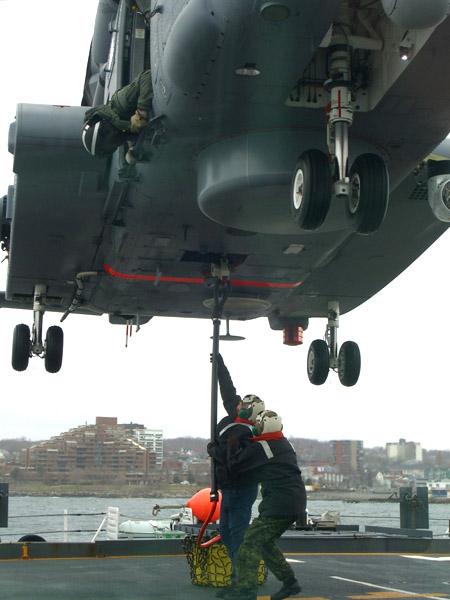 |
| VERTREP hookup. (Photographer unknown) |
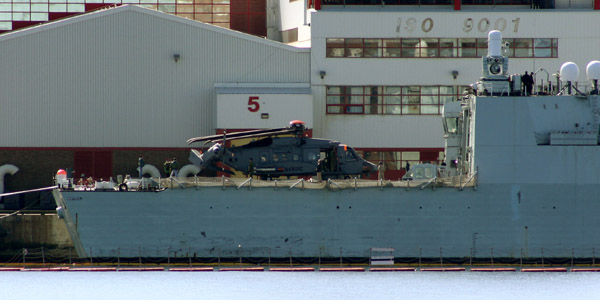 |
| N4901C aboard HMCS Montreal on March 11, 2010. It's primary mission was to develop specifications for "Ship Helicopter Operating Limits" . (Photo by Ian MacCorquodale) |
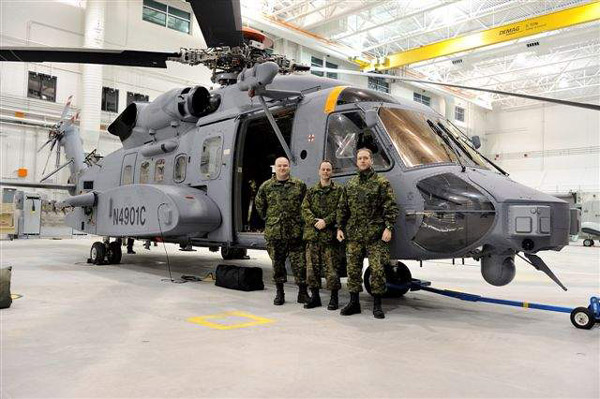 |
| Hanger interior at night. (Photographer unknown) |
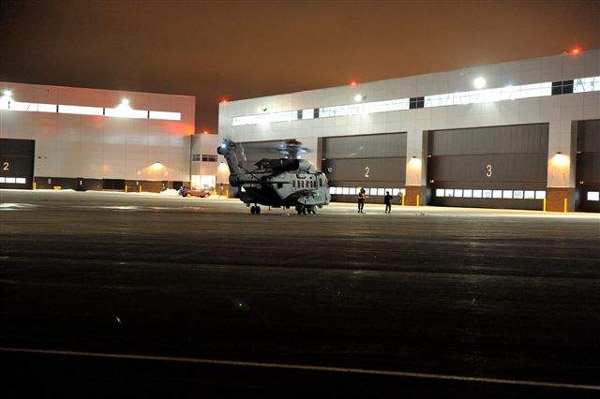 |
| Ernie Cable of the Shearwater Aviation Museum describes the new facilities for the CH-148. "The inner ramp at Shearwater has changed dramatically since 2008. "D" hangar has been torn down a replaced by the "Maritime Helicopter Training Centre" (a new home for 406 Sqn). Three new hangars have been built across the north end of the inner ramp for 423 Sqn and 12 Air Maintenance Sqn. These hangars incorporate the latest state-of-the-art features in hangar design which have been tailored specifically for the CH-148. You can see the massive size of these hangars from the CH-148 photos. A similar new hangar is being built at Patricia Bay for 443 Sqn." (Photographer unknown) |
Credits and References:
1) Ian MacCorquodale <maccdale(at)hotmail.com>
2) Ernie Cable <erncar(at)ns.sympatico.ca>
3) Ian Snow <va3qt-4(at)sympatico.ca>